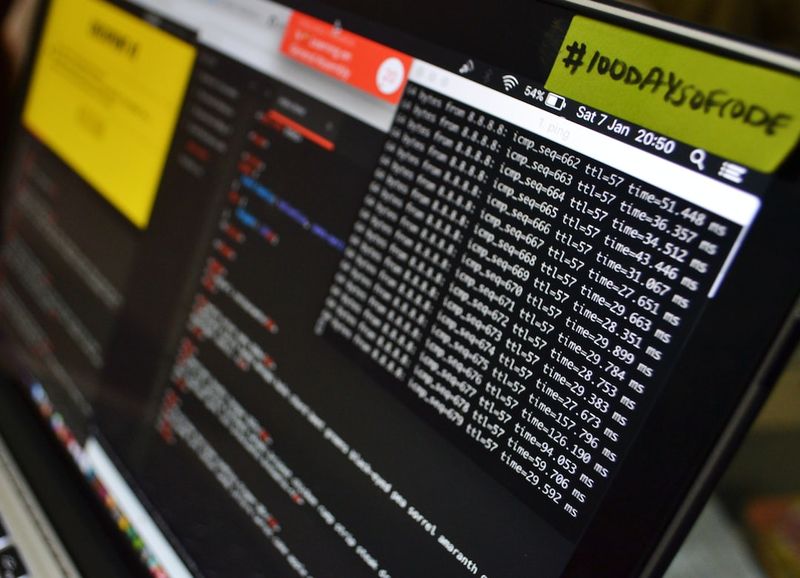Data Breach at VirusTotal Exposes Premium Account Information
On July 21, 2023, VirusTotal, the popular threat analysis service owned by Google, provided clarifications on a recent data breach that resulted in the exposure of information on 5,600 of its customers. This incident raised concerns about the potential for social engineering attacks targeting impacted users, particularly those associated with government organizations such as the United States’ Justice Department, FBI, NSA, and Cyber Command.
Human Error, Not Cyber Attack
According to Emiliano Martinez, head of product management at VirusTotal, the data leak was not the result of a cyber attack or a vulnerability with VirusTotal‘s systems. Instead, it was caused by a human error. On June 29, an employee accidentally uploaded a CSV file containing information on VirusTotal‘s Premium account customers. This file included details like organization names, associated group names, and group administrator email addresses.
VirusTotal promptly removed the file within an hour of it being uploaded. The exposed list was only accessible to partners and corporate clients who have access to the Premium platform. It could not have been seen by malicious actors or free account holders. The company stated that the employee in possession of the data had legitimate access due to the nature of their role within VirusTotal.
Apologies and New Security Measures
In their blog post addressing the incident, VirusTotal expressed their apologies to their customers and stated that they have implemented new internal processes and technical controls to enhance the security and safeguarding of customer data. While the breach was not the result of malicious intent, it serves as a reminder of the importance of stringent security protocols and employee training in handling sensitive information.
The Implications and Risks of Data Breaches
Data breaches have become an all-too-common occurrence in the digital age. The rapid digitization of information and the increasing sophistication of cyber threats have made it challenging to protect personal and organizational data. The exposure of customer information, especially in cases involving government entities, poses significant risks.
Threat actors can potentially leverage the leaked data to conduct social engineering attacks, such as phishing or spear-phishing, targeting the affected users. By using the compromised information, attackers can craft convincing emails or messages that trick individuals into disclosing sensitive information or performing actions that compromise their security.
The Role of Internet Security
Ensuring robust internet security measures is paramount for organizations and individuals alike. This includes implementing multi-factor authentication, using strong and unique passwords, regularly updating software and systems, and providing comprehensive training to employees on recognizing and responding to potential threats.
Additionally, organizations must establish strict access controls and protocols for handling sensitive data. Limiting access to only those who need it can reduce the likelihood of accidental data leaks or unauthorized access.
Philosophical Perspectives on Data Security
The rise of data breaches raises questions about privacy, trust, and the responsibilities of companies that handle vast amounts of personal and organizational information. In an increasingly interconnected world, where individuals and organizations rely on technology for communication, commerce, and countless other activities, the need for a robust and ethical approach to data security is evident.
Data breaches not only undermine individuals’ trust in the organizations they interact with but also highlight the broader societal issues surrounding data privacy and ownership. As more aspects of our lives become interconnected and our digital footprints expand, the risks associated with data breaches become more pronounced.
The Role of Companies and Accountability
Companies that handle sensitive customer data must take proactive steps to prevent data breaches and respond swiftly and transparently when incidents occur. Implementing stringent security practices, conducting regular audits and risk assessments, and investing in robust cybersecurity infrastructure are essential elements of data protection. Communication and notification to affected individuals and organizations should be prompt and thorough.
Regulatory bodies and governments also play a crucial role in ensuring that companies adhere to privacy and security standards. Clear and enforceable regulations, coupled with rigorous oversight and penalties for negligence, help create a culture of accountability and incentivize organizations to prioritize data security.
Editorial: Lessons Learned and Moving Forward
The data breach at VirusTotal serves as a reminder that even well-established organizations, backed by industry giants like Google, are not immune to human error and the potential for data leaks. While the company took prompt action in removing the exposed data and implementing new security measures, there are several key takeaways from this incident.
Firstly, human error will remain a significant risk factor in cybersecurity. No matter how robust the technological defenses are, the actions of individuals within an organization can still lead to data breaches. Organizations must invest in comprehensive training programs to equip employees with the skills and awareness necessary to handle sensitive data responsibly.
Secondly, data breaches emphasize the need for continuous improvement and adaptation in security practices. Cyber threats are constantly evolving, and organizations must stay one step ahead by regularly updating their security protocols and investing in the latest technologies.
Finally, data breaches should serve as a catalyst for broader discussions around data privacy, ownership, and the responsibilities of companies. As individuals and organizations become more reliant on technology, there must be a societal commitment to creating a secure digital environment that protects personal information and respects privacy rights.
Advice for Individuals and Organizations
In light of the VirusTotal data breach and the ongoing threat of cyber attacks, individuals and organizations can take several steps to enhance their internet security:
- Regularly update software and systems to ensure the latest security patches are in place.
- Implement multi-factor authentication to provide an extra layer of security.
- Use strong, unique passwords for each online account and consider using a password manager.
- Exercise caution when clicking on links or opening attachments in emails, especially if they come from unfamiliar sources.
- Invest in reputable cybersecurity software and keep it up to date.
- Regularly back up important data to minimize the impact of potential data loss.
Organizations should also:
- Establish strict access controls and protocols for handling sensitive data.
- Conduct regular risk assessments and audits to identify vulnerabilities and proactively address them.
- Provide comprehensive training to employees on identifying and responding to potential threats.
- Invest in robust cybersecurity infrastructure and stay informed about emerging trends and best practices.
- Stay updated with relevant regulations and ensure compliance with data privacy and security standards.
- Communicate promptly and effectively with affected individuals and organizations in the event of a data breach.
By following these guidelines and fostering a culture of security awareness, individuals and organizations can mitigate the risks posed by data breaches and contribute to a safer digital landscape.

<< photo by NEOM >>
The image is for illustrative purposes only and does not depict the actual situation.
You might want to read !
- Sophisticated “BundleBot” Malware Masquerades as Google AI Chatbot and Utilities
- The Rise of Ransomware Attacks: Safeguarding Local Governments from Cyber Threats
- Tech Titans’ Pledge: Watermarks to Reveal Origins of AI Creations
- The Continuing Vulnerabilities of RDP: Uncovering More Reasons for Its Insecurity
- The Growing Threat: Estée Lauder’s Battle Against Ransomware Attacks
- The Chinese breach of Microsoft cloud services: Unraveling the unanswered questions
- VirusTotal Data Leak: Examining the Impact on Over 5,000 Users
- VirusTotal Data Leak: Unveiling the Vulnerability of Registered Customers’ Information
- Shell Confronts Cybersecurity Crisis: Confirmed Breach and Data Leak by Ransomware Group




